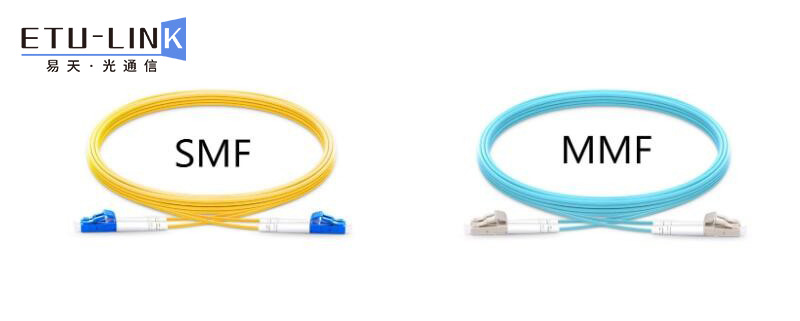Before understanding the differences between single mode and multimode, we need to know that light propagates in a fiber as a set of independent beams, which propagate at a specific angle to the fiber axis and are called modes. We can distinguish between single mode and multimode by transmission mode. Single mode fiber supports one mode, while multimode fiber supports multiple modes. Below, ETU-LINK will analyze the differences between single-mode and multimode optical fibers from five aspects.
 1.The transmission mode is different
1.The transmission mode is different
Single-mode fiber transmits in one mode, while multimode fiber tends to have hundreds of transmission modes.
2.Different fiber core sizes
Multimode fiber has a larger core diameter than single-mode fiber, typically 62.5um or 50um, while single-mode fiber has a core diameter of about 9um.
3.Relative refractive index difference
The relative refractive index difference between the core and the cladding of a multimode fiber is much larger than that of a single-mode fiber, generally ~1%, or ~2%, or higher, while the relative refractive index difference of a single-mode fiber is generally Less than 0.4%.
4.Refractive Index Profile
The pulse broadening caused by the different arrival times of multiple modes at the receiving end is called modal (intermodal) dispersion, which greatly reduces the bandwidth of the fiber. To solve this problem, multimode fiber uses a graded index so that different modes can reach the receiving end at the same time. The single-mode fiber only supports one mode, so there is no such worry, so it is usually a step index.
5.Application Scenario
The multiple modes of multimode fiber will cause pulse broadening, and its bandwidth is lower than that of single-mode fiber, so it is mainly used in short-distance transmission, such as local area network, data center, etc. The single-mode optical fiber has a long transmission distance and is mainly used in scenarios such as metropolitan area networks and backbone networks.
The above is the difference between single-mode fiber and multi-mode fiber jumper introduced by ETU-LINK. In the connection application with optical modules, multi-mode fiber is used for multi-mode optical modules, while single-mode fiber is used for for single-mode optical modules.


